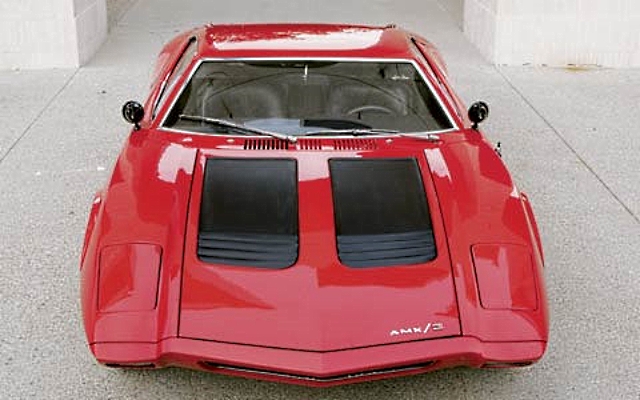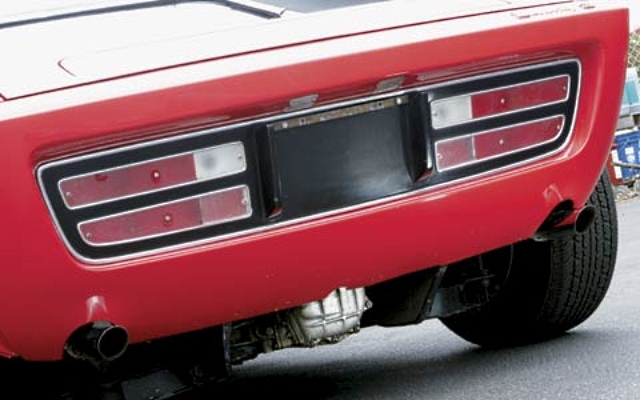Before we’re swarmed with angry emails laced with bad spelling and non-existent grammar, we should preface this edition of “Muscle Cars You Should Know” with the admittance that neither was the AMX/3 a muscle car nor even made it to production. Rather, we unanimously agree that the AMX/3 embodies the spirit of the race for performance’s next evolutionary step.
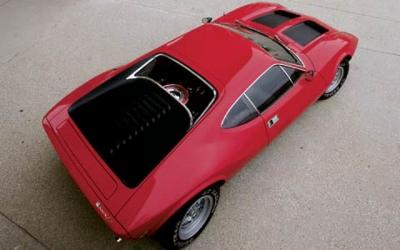 Understanding how this rare and exceptional piece of American muscle history earned its place begins with its more popularly known progenitors. Those of us who remember the original AMX muscle car will recall it as a stubby, two-seater version of the AMC Javelin. Manufactured from 1968 through 1970, the two-seater built a reputation and presence far greater than its total production run of less than twenty thousand units would suggest.
Understanding how this rare and exceptional piece of American muscle history earned its place begins with its more popularly known progenitors. Those of us who remember the original AMX muscle car will recall it as a stubby, two-seater version of the AMC Javelin. Manufactured from 1968 through 1970, the two-seater built a reputation and presence far greater than its total production run of less than twenty thousand units would suggest.
American Motors had done reasonably well in the sixties’ muscle car era, despite arriving a bit late. As was the case with other manufacturers, the early Javelin was developed from humble sedan roots. The company had limited resources to invest, which actually worked to the Javelin’s favor. Designer Richard Teague was forced to compromise and penned a semi-fastback roofline that became a styling signature for the company’s modern performance cars. Teague was known as a practical, yet creative, designer who could adapt a program objective to fit with lower cost solutions based on reusing existing parts already in production.
Concepts for the original Javelin had been explored in 1965, from a pair of concept cars labeled AMX/1 (American Motors Experimental) and AMX/2. The company was working to shed an image of building rather boring, blue collar vehicles. The production Javelin and AMX cars were successful in supporting this, but a more concentrated effort would be needed to signal a revolutionary new image.
To this end, Teague and other AMC executives had authorized the build of a third concept car based on a far more European design that would be known as the AMX/3. This was a mid-engined, two-seater supercar far more along the lines of what was being built by Lotus as the Esprit. Using AMC’s 390cui V8, mated to a custom Melara 4-speed transaxle and steel semi-monocoque chassis, the resulting car, was built in Italy by Giotto Bizzarrini. The ex-Ferrari engineer was an ideal fit for the project and was able to contribute strongly in making the required design happen at a realistic cost.
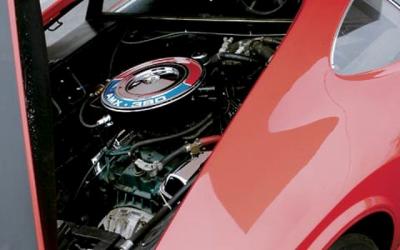 The car’s steel semi-monocoque chassis proved to be an important part of the car’s design for, when the steel body was welded onto it, the overall structure became strong. In fact, BMW who, had been contracted to do the car’s high speed testing, found the car to be one of the most neutral handling cars they had ever encountered.
The car’s steel semi-monocoque chassis proved to be an important part of the car’s design for, when the steel body was welded onto it, the overall structure became strong. In fact, BMW who, had been contracted to do the car’s high speed testing, found the car to be one of the most neutral handling cars they had ever encountered.
Due to a tendency for the front end to lift at speed, the top speed was only verified to 160 mph but reports indicate that the car had room to go faster.
The 390 engine had otherwise proved a bit troublesome, to the extent that its torque output was beyond what the typical ZF transaxle 5-speed could handle, so the Italian company Melara was given the job to develop a new gearbox. The engine’s oversquare design (4.17-inch bore and 3.57-inch stroke) coupled with a 10:1 compression ratio, delivered an adequate 340hp @ 5100 rpm, but the accompanying torque was massive – 430 ft-lbs @ 3600 rpm.
The overall look of the car is instantly reminiscent of the DeTomaso Pantera, although Teague has often said that he knew nothing of the Ford effort at the time and that the Pantera would come to the States two years after the AMX/3 came and went. With a similar configuration (a low slung, two-seater with a 351cui V8 engine mated to a ZF), it is easily argued that the range of practical exterior envelopes is somewhat constrained.
The AMX/3 in fact, sports a 6.3-inch longer wheelbase and bests the Pantera in overall length by eight inches, all while maintaining a slightly lower curb weight. A total of six Bizzarrini prototypes were built before the program was shelved. The cars very much reflected the contemporary thinking of the day for race-inspired grand touring design, with unequal length A-arm independent suspension, front and rear, using coil springs, tube shock absorbers and ventilated disc brakes all around.
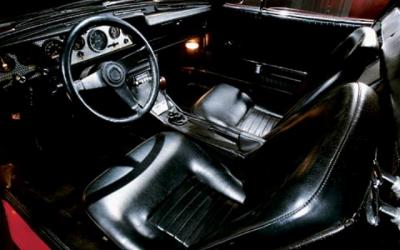 Following the first stateside review of the running concept car, the way was cleared and an order placed with Bizzarrini to begin a production run of thirty vehicles. The finished cars were to be well equipped, with power steering and four-wheel power disc brakes that fed from a common hydraulic source. The leather interior displayed a full set of gauges, with leather wrapped steering wheel and moderately contoured seats for spirited driving.
Following the first stateside review of the running concept car, the way was cleared and an order placed with Bizzarrini to begin a production run of thirty vehicles. The finished cars were to be well equipped, with power steering and four-wheel power disc brakes that fed from a common hydraulic source. The leather interior displayed a full set of gauges, with leather wrapped steering wheel and moderately contoured seats for spirited driving.
However, the 1970’s saw turbulent times arriving for the automotive industry. Production cars were facing mandatory compliance with emission and safety standards for which all known solutions of the time were expensive and could only be cost justified on high volume vehicles. Despite the best efforts of Teague’s and Bizzarrini’s people, no cost effective solution could be found that maintained the styling freedom need to keep the AMX/3 looking good.
Unlike many other manufacturer’s concept programs, which require uncertifiable vehicles to be crushed, the six Bizzarrini-built AMX/3 prototypes, plus the original unpowered mock-up, remain in existence today. The unpowered car, according to reports, resulted from measurement errors while converting between inch-standard and metric dimensions. The resulting problems made it impossible – within any reasonable cost – to repair the car and so it remained a display-only car.
The AMX/3 concept is broadly considered to be the pinnacle of AMC’s and Teague’s design work and today’s automotive landscape might look significantly different today had circumstances at the time been only a little more forgiving.
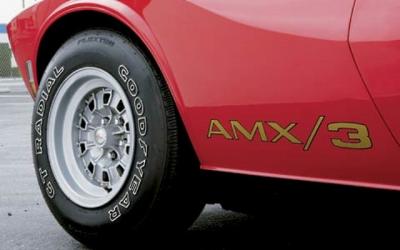 Still, American Motors’ brush with supercar design was perhaps more ambitious than the company’s size could have ever justified. However, it’s continued development in the muscle car arena kept delivering new and memorable – if not mainstream – entrants, such as ’69 SC/Rambler, the ’70 Rebel Machine, and the ’71 Hornet SC/360.
Still, American Motors’ brush with supercar design was perhaps more ambitious than the company’s size could have ever justified. However, it’s continued development in the muscle car arena kept delivering new and memorable – if not mainstream – entrants, such as ’69 SC/Rambler, the ’70 Rebel Machine, and the ’71 Hornet SC/360.
The continued turmoil of the 1970’s ultimately led to AMC’s demise. In 1979, they sold a five percent stake to Renault for $135 million, but had to divest the AM General military division which had been its most profitable operating segment.
Not long after, Renault itself fell into financial challenge and, in 1987, Chrysler bought all assets of AMC, primarily for the Jeep brand name, which they have kept to this day.
CHECK OUT OTHER MUSCLE CARS YOU SHOULD KNOW
- ’71 AMC Matador Machine 401
- ’67 Plymouth HEMI GTX “Silver Bullet”
- ’71 Baldwin Motion Phase III GT
- ’63 Chevrolet Z11 Impala 427
- ’64 Chrysler Ghia Turbine Car
- ’63 Pontiac Catalina Lightweight 421
- ’69 Mercury Cougar BOSS 429
- ’69 Royal Bobcat Pontiac GTO Ram Air V
- ’87 Buick Regal GNX
- ’69 Ford Mustang BOSS 302 George Follmer’s #16
- ’69 Ford Mustang BOSS 429
- ’69 Dodge Charger Daytona #88
- ’69 Motion Chevrolet Camaro Z/28 427 ZLX
- ’69 Motion Hurst/Oldsmobile 455




